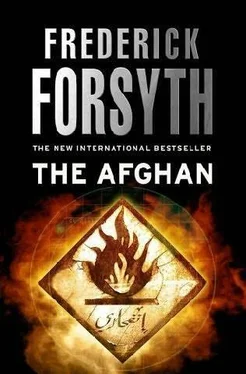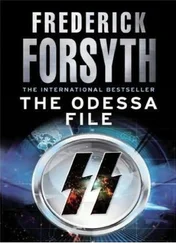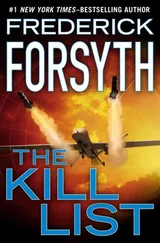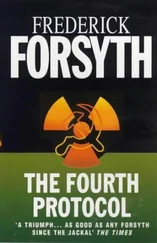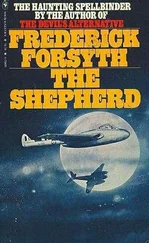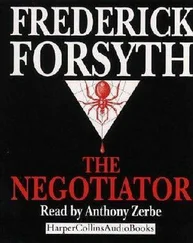It was seventy-two hours after the White House conference when the first KH-n “Keyhole” satellite rolled onto its track in space and began to photograph the Indonesian circle. Its computers had been instructed to photograph, regardless of steaming direction, any merchant marine vessel within three hundred miles’ radius of Labuan Island. Computers obey instructions, so it did. As the KH-n began to photograph, the Countess of Richmond, heading due south through the Makassar Strait, was 310 miles south of Labuan. It was not photographed.
***
From London, the White House’s obsession with an attack from the Pacific was only half the picture. The warnings from the Edzell conference had been submitted in the UK and the USA for further scrutiny, but the findings were broadly endorsed.
It took a long, personal call on the hotline between Downing Street and the White House to conclude a concordat on the two most vital narrows east of Malta. The agreement provided that the Royal Navy, in partnership with the Egyptians, would monitor the southern end of the Suez Canal to intercept all ships save the very smallest coming up from Asia.
The U.S. Navy’s warships in the Persian Gulf, Arabian Sea and Indian Ocean would patrol the Straits of Hormuz. Here, the threat would only be from a huge vessel capable of sinking itself in the deepwater channel running down the center of the straits. The principal traffic here was of supertankers, entering empty from the south, coming back low in the water and full of crude after loading at any of the score of islands scattered off Iran, the UAE, Qatar, Bahrain, Saudi Arabia and Kuwait.
The good news for the Americans was that the companies owning such vessels are relatively few altogether, and ready to cooperate to prevent a disaster for all of them. Landing a party of U.S. Marines by Sea Stallion helicopter on the deck of a supertanker heading for the straits, but still three hundred miles short, and having a quick tour of the bridge, took very little time and did not slow the vessel at all.
As for threats number two and three, every government in Europe with a major seaport was warned of the possible existence of a ghost ship under the command of terrorists. It was up to Denmark to protect Copenhagen, Sweden to look after Stockholm and Gote-borg, Germany to watch out for anything entering Hamburg or Kiel; France was warned to defend Brest and Marseille. British Navy airplanes out of Gibraltar started to patrol the narrows, the Pillars of Hercules, between the Rock and Morocco, to identify anything coming in from the Atlantic.
***
All the way over the Rockies, Major Duval had put the Eagle through its paces, and it had performed perfectly. Below him, the weather had changed. The cloudless blue skies of Arizona betrayed first a few wisps of mare’s tail cloud lines, which thickened as he left Nevada for Oregon. When he crossed the Columbia River into Washington, the cloud below him was solid from treetop height to twenty thousand feet, and moving down from the Canadian border to the north. At thirty thousand feet, he was still in clear blue sky, but the descent would involve a long haul through dense vapor. Two hundred miles out, he called McChord AFB and asked for a ground-controlled descent to landing. McChord asked him to stay out to the east, turn inbound over Spokane and descend on instructions. The Eagle was in the left-hand turn toward McChord when what was about to become the USAF’s most expensive wrench slipped out of where it had lain jammed between two hydraulic lines in the starboard engine. When the Eagle leveled out, the wrench fell into the blade of the turbofan. The first result was a massive bang from somewhere deep in the guts of the starboard Fioo as the compressor blades, sharp as cleavers and spinning close to the speed of sound, began to shear off.
Each sheared blade jammed among the rest. In both cockpits, a blazing red light answered Nicky Johns’s yelled “What the f____________________ was that?” In front of him, Larry Duval was listening to something inside his head screaming, Close it down.
After years of flying, Duval’s fingers were doing the job almost unbidden, flicking off one switch after another: fuel, electric circuits, hydraulic lines. But the starboard engine was blazing. The built-in fire extinguishers operated automatically but were too late. The starboard Fioo was tearing itself to pieces in what is known as “catastrophic engine failure.” Behind Duval, the Wizzo was telling McChord: “Mayday, Mayday, Mayday. Starboard engine on fire…”
He was interrupted by another roar from behind him. Far from shutting down, fragments of the starboard engine had torn through the firewall and were attacking the port side. More red lights blazed. The second engine had caught fire also. With reduced fuel and one engine functioning, the Eagle with Duval piloting could have made it down. But with both engines dead, a modern fighter does not glide like fighters long ago; it plunges like a bullet. Captain Johns would tell the inquiry later that his pilot’s voice remained calm and level. He had switched the radio to transmit, so that the air traffic controller at McChord did not need to be informed; he was hearing it in real time.
“I have lost both engines,” said the major. “Stand by to eject.” The Wizzo looked one last time at his instruments. Altitude: 24,000. Diving; dive steepening. Outside, the sun still shone, but the cloud bank was seething toward them. He glanced round over his shoulder. The Eagle was a torch, flaming from end to end. He heard the same calm voice up front: “Eject, eject.” Both men reached down for the handle beside their seats and pulled. That was all they needed to do. Modern ejection seats are so automated that even if the airman is unconscious, they will do everything for him. Neither Larry Duval nor Nicky Johns actually saw their airplane die. With seconds to spare, their bodies were hurled upward through the shattering canopy and into the freezing stratosphere. The seat restrained their legs and arms so they would not flail and snap off. The seat protected their faces from the blast that could push their cheekbones through their skulls. Both falling ejection seats stabilized with tiny drogues and plunged toward the ground. In a second, they were lost in the cloud bank. Even when they were able to see through their visors, the two aircrew could only watch the wet, gray clouds rushing past them.
The seats sensed when they were near enough to the ground to release their charges. The restraining straps just flicked open, and the men, now separated by a mile from each other, fell out of their seats, which dropped into the landscape below.
The men’s parachutes were also automatic. They, too, deployed, first with a small drogue to steady the falling men in the air, then with the main canopy. Each man felt the heaving jerk as a terminal velocity of 120 miles per hour slowed to around fourteen.
They began to feel the intense cold through their light nylon flight suits and G suits. They seemed to be in a weird, wet, gray limbo between heaven and hell until they crashed into the topmost branches of pine and spruce. In the half darkness beneath the cloud bank, the major landed in a type of clearing, his fall cushioned by springy conifer branches lying flat on the ground. After several seconds dazed and winded, he released the main chute buckle at his midriff and stood up. Then he began to broadcast so the rescuers could get a fix on him.
Nicky Johns had also come down in trees, but not in a clearing; right in the thick of them. As he hit the branches, he was drenched in the snow that fell off them. He waited for the “hit,” the ground, but it never came. Above him, in the freezing gloom, he could see that his parachute was caught in the trees. Below, he could make out the ground. Snow and pine needles, he thought, about fifteen feet down. He took a deep breath, hit the release buckle and fell. With luck, he would have landed and stood up. In fact, he felt his left leg snap neatly at the shin as it slid between two stout branches under the snow. That told him that cold and shock would start to eat into his reserve without mercy. He, too, unhooked his transmitter and began to broadcast.
Читать дальше
